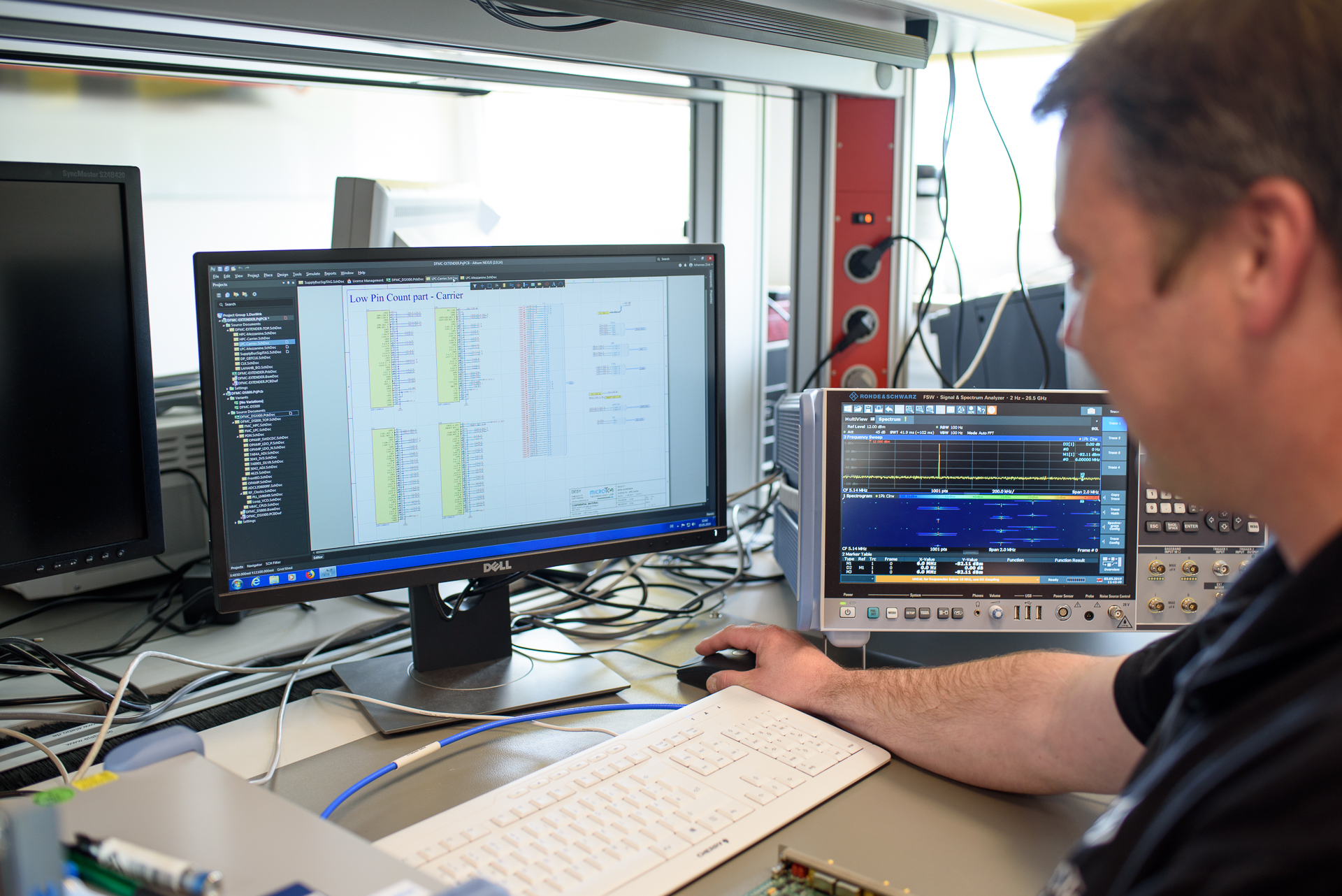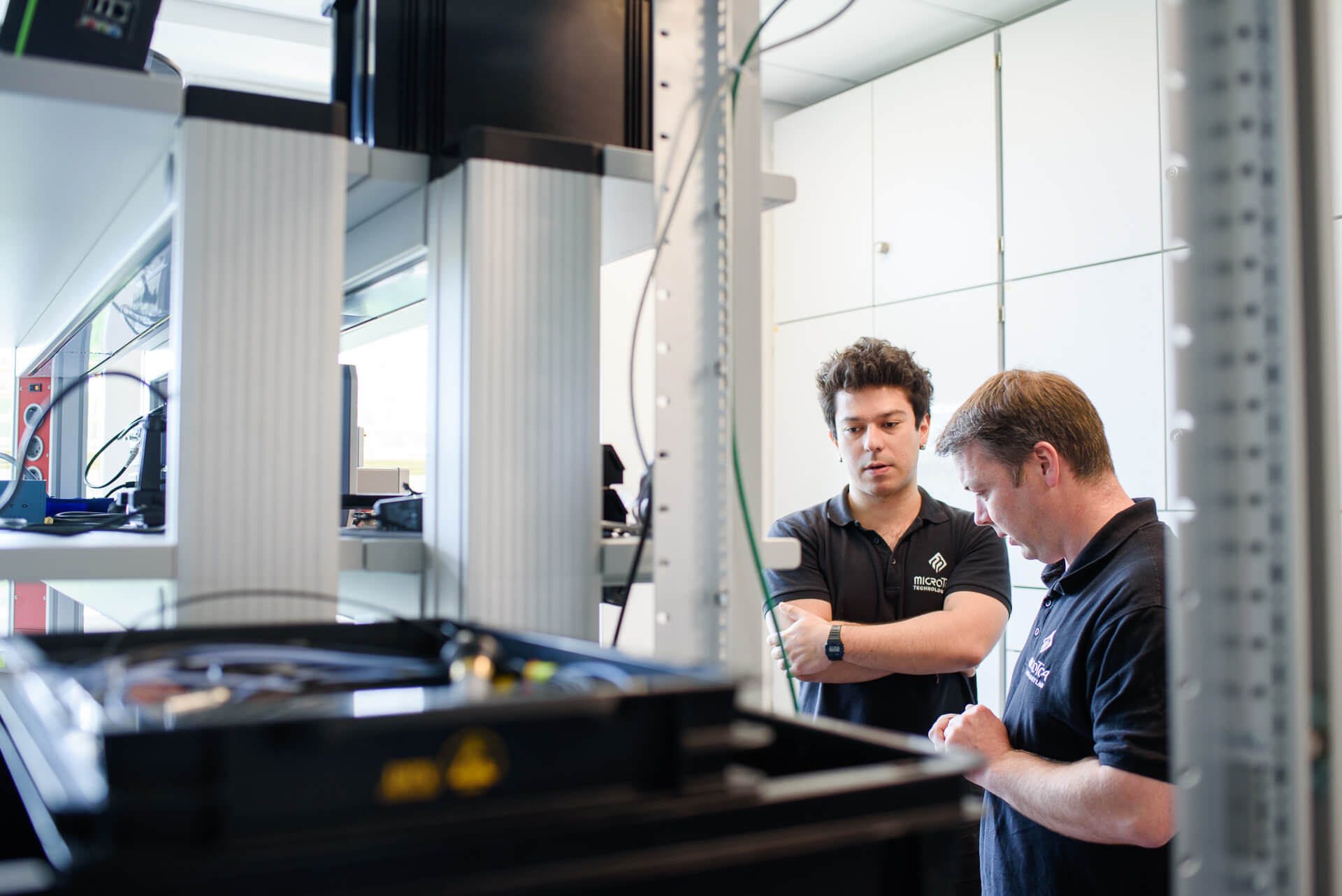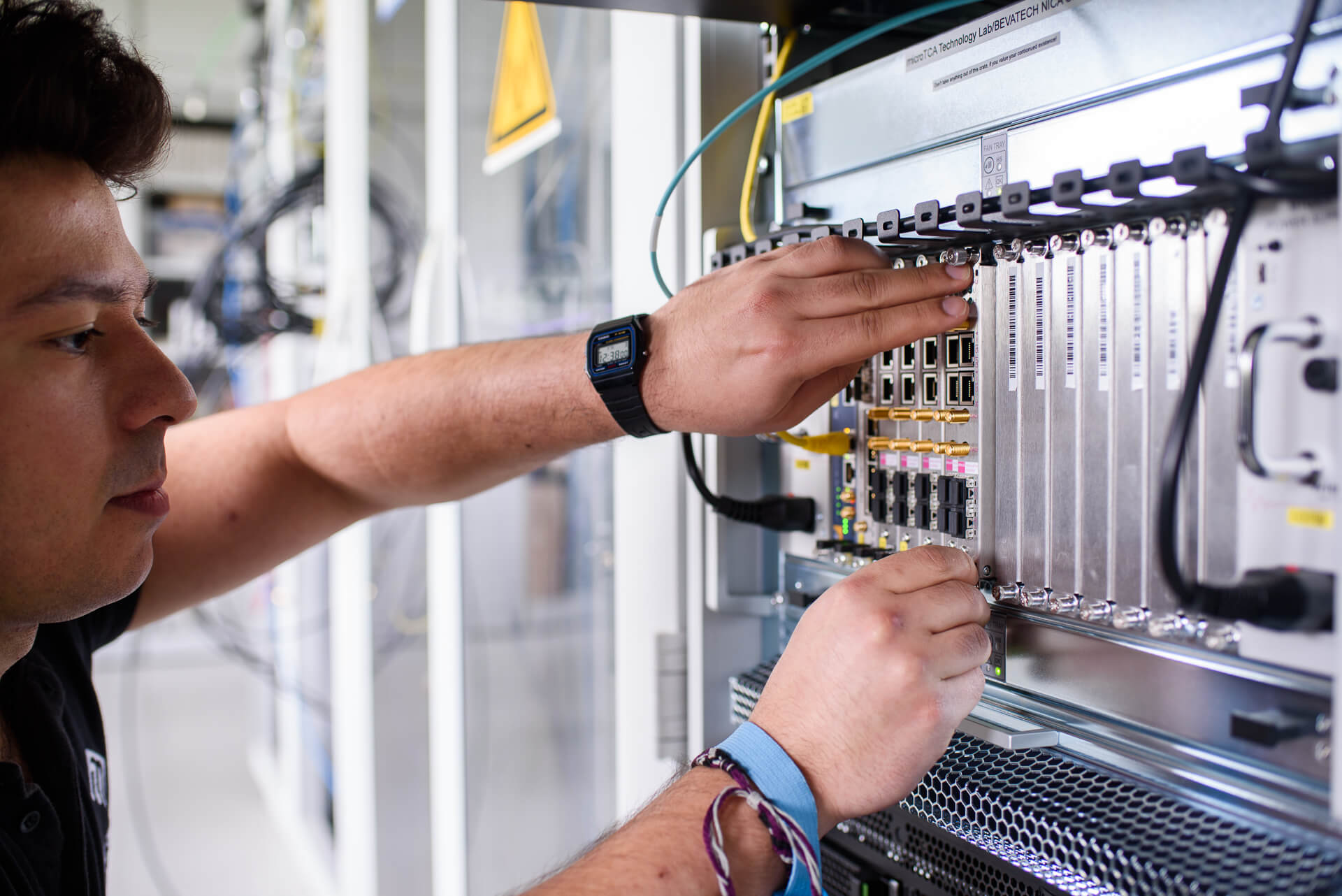MicroTCA Technology Lab
The open and modular electronics standard MicroTCA permits high-performance and reliable data processing and control operations to be carried out at large-scale scientific research facilities and in industry. In order to meet the unique requirements of the European XFEL, this standard has been developed further under the leadership of DESY to become MicroTCA.4.


Technology transfer for more than 10 years
DESY’s MicroTCA Technology Lab is a prime example of successful technology transfer and collaboration between science and industry. The facility was founded in 2016 as the Helmholtz Innovation Lab and specialises in the commercialisation of DESY know-how and DESY developments in the field of MicroTCA. Another key area is expanding and supporting the user community by means of targeted new developments in the areas of hardware, firmware and software, as well as the regular organisation of training and networking events.
Top demands require top performance. Accuracy, data throughput and reliability are key requirements here, and all of them are met by the MicroTCA (Micro Telecommunications Computing Architecture) electronics standard, which originated in information and telecommunications technology. In order to control the high-brilliance radiation source of the European XFEL, the standard was developed further to become MicroTCA.4, a process in which DESY played a significant role. The MicroTCA standard is published by the PCI Industrial Computer Manufacturers Group (PICMG), a non-profit consortium of global institutions and companies that has been working in the field of computing architectures for more than 25 years.
One of the main advantages of MicroTCA is the way it combines modularity, scalability and remote controllability while resorting to state-of-the-art analogue and digital technologies. Data transfer protocols such as PCI Express Gen.3 and up to 40Gb Ethernet allow large amounts of data to be processed. Various system architectures with different cooling concepts mean that it can be used in a wide range of operating environments. Hence MicroTCA is becoming increasingly important for industries that are interested in fully managed, modularly scalable and reliable computing performance.
Use in science and industry
Today, MicroTCA.4 not only guarantees the safe operation of the European XFEL and other accelerator facilities at DESY, it is also used by other research institutes and numerous industrial companies worldwide. This includes operating telescopes at the European Southern Observatory (ESO), controlling fusion reactors such as Wendelstein 7-X in Greifswald, or building quantum computer architectures. New and potential fields of application in industry could, for example, include visual inspection, automation or high-precision measurements.
MicroTCA.4 also provides the basis for the Electronic Ground Support Equipment (EGSE) of the LISA mission, a European Space Agency (ESA) research project for detecting gravitational waves. More information about the LISA mission is available here.

Products and developments
The MicroTCA Technology Lab offers a selection of DESY developments and products both on a commercial basis and as open source in support of the community. Its aim is to disseminate the MicroTCA standard and make DESY’s know-how in this area more widely available. The portfolio ranges from solutions for MicroTCA management through high-performance image processing and various hardware components to the integration of complete systems according to customer-specific requirements.
For an overview of offered products click here.
TechLab Services
To make it easier for newcomers to get started, the MicroTCA Technology Lab regularly offers training courses for new and advanced users. The MicroTCA Workshop for Research and Industry is also firmly established and an ideal platform for interdisciplinary exchange. It takes place every year at the beginning of December and is attended by up to 200 participants.
MicroTCA.4 Training for Beginners
Upcoming Events:
July 2-3, 2025
November 5-6, 2025
The MicroTCA Technology Lab team supports research institutions and companies with their customised designs in the areas of hardware, firmware and software as well as at a systems level. Please feel free to contact us. We look forward to working with you and designing the ideal solution to your problem.
The MicroTCA Technology Lab gives research institutions and companies access to DESY’s entire know-how in the field of MicroTCA. We will be happy to help you select suitable components or advise you on how to implement your project. Should problems arise in terms of function or interoperability, the MicroTCA Technology Lab will be happy to assist you in troubleshooting.
Support
Do you need technical support or are you interested in further topics and useful tools related to MicroTCA? Here you will find information on hardware design templates, PCIe drivers, the DESY Zone3 Recommendation and other useful tools.
Industry partners and licences
A central component of the MicroTCA Technology Lab is its successful collaboration with partners in industry, which reaches back many years. Particularly in the areas of marketing, sales and hardware production, synergies often arise which can be exploited through targeted cooperation, e.g. via a production licence.
Many products originally developed by DESY are now commercially available from partner companies in industry. Examples include the DAMC-FMC2ZUP (licensed to CAENels) and the DAMC-TCK7 (licensed to N.A.T.).
An overview of our partners is available here soon
Industry partners and licences
A central component of the MicroTCA Technology Lab is its successful collaboration with partners in industry, which reaches back many years. Particularly in the areas of marketing, sales and hardware production, synergies often arise which can be exploited through targeted cooperation, e.g. via a production licence.
Many products originally developed by DESY are now commercially available from partner companies in industry. Examples include the DAMC-FMC2ZUP (licensed to CAENels) and the DAMC-TCK7 (licensed to N.A.T.).
An overview of our partners is available here soon




